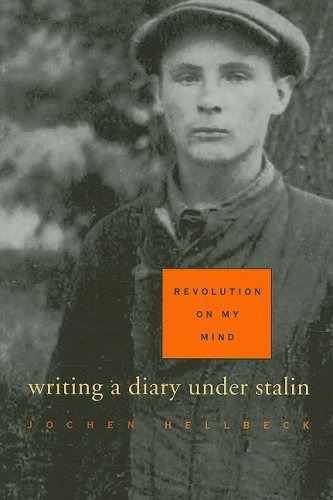Fitzpatrick’s chapter regarding the Great Purges of the Soviet Union reads like a dystopian novel. Even the epigraph at the beginning stirs thoughts of “Big Brother”; it reads “You know they are putting people in prison for nothing now”. Fitzpatrick attributes this quote to an anonymous “local official”, circa 1938, the temporal heart of the Great Purge. ((Fitzpatrick, Sheila. “A Time of Troubles,” in Everyday Stalinism: Ordinary Life in Extraordinary Times: Soviet Russia in the 1930s. (Oxford University Press, 2000), 190.)) This epigraph highlights a concept touched on throughout the rest of this chapter: no one in the Soviet Union, whether they be members of the communist party or ordinary citizens, escaped the wrath of the purge.
In other cases of state sponsored violence studied in this course thus far, a specific group finds themselves in the cross-hairs of the government. In Nazi Germany, the state took aim at the Jews. In Soviet Russia, however, the target never stayed the same. As Fitzpatrick notes, “enemies of the party” came under heaviest scrutiny, which ranged from people politically opposed to the rule of Stalin, to those ‘bourgeois degenerates’ who used state money to make their living situation more comfortable. ((Fitzpatrick, “A Time of Troubles,” 197.)) These high born degenerates suffered a great number of trials and tribulations due to their perceived offences. Public scapegoating came into common practice. These scapegoatings, as Fitzpatrick notes, often occurred among workers towards an individual in a position of power above them. These “Stakhanovites” organized meetings, and in them, flung insults at whomever they chose, calling them “bureaucratic barbarians” and comparing the accused to Joseph Goebbels, the Nazi minister of propaganda. ((Fitzpatrick, “A Time of Troubles,” 200.)) Still, however, at this point in the purge, the elites suffered, not the commoners.
The Great Purge did not spare the common, government fearing citizen. In fact, as Fitzpatrick eloquently points out, it did not spare anyone. This all occurred because of denouncement. Neighbors snitching on neighbors to secret police and spies. Students on teachers. Factory workers on one another. Even members of the communist party sought fit to report crimes. No one, not even an innocent (albeit troubled) 8 year old boy, found themselves under an umbrella of safety from this disturbing phenomena. It is this that made the Great Purge so terrifying and effective.((Fitzpatrick, “A Time of Troubles,” 207-208.))
Sending people to the Gulag on a tip from their neighbor, persecuting political prisoners, and denouncing members of the privileged elite created, in essence, a state of fear in Soviet Russia. It fostered obedience to the state. Why? In times of most stark oppression, as seen in Italy under Mussolini (who met his end at the hand of his own people) and in Kenya during the Mau Mau era, people often organize, revolt, and overthrow the government; every society has its breaking point. How far would Stalin have to have gone in order to incite a revolt among his own people? If mass imprisonment, murder, and development of total paranoia among all members of society didn’t do it, what would?

 Has diary writing survived? Is there something comparable now?
Has diary writing survived? Is there something comparable now? Consider them in the context of popular social networks. Imagine the most cautious user — only friends can see their posts, does not use an accurate identifying picture, and only accepts requests from close, close, friends. Their records can be obtained by any determined individual, similar to the Stalinist state. But, our user runs this risk. On such sites, our user hopes to associate and connect with like-minded individuals. Is this not what Podlubni hopes to accomplish? A connection with the other members of his State through the fashioning of his personality, of his “Stalinist soul”.
Consider them in the context of popular social networks. Imagine the most cautious user — only friends can see their posts, does not use an accurate identifying picture, and only accepts requests from close, close, friends. Their records can be obtained by any determined individual, similar to the Stalinist state. But, our user runs this risk. On such sites, our user hopes to associate and connect with like-minded individuals. Is this not what Podlubni hopes to accomplish? A connection with the other members of his State through the fashioning of his personality, of his “Stalinist soul”.